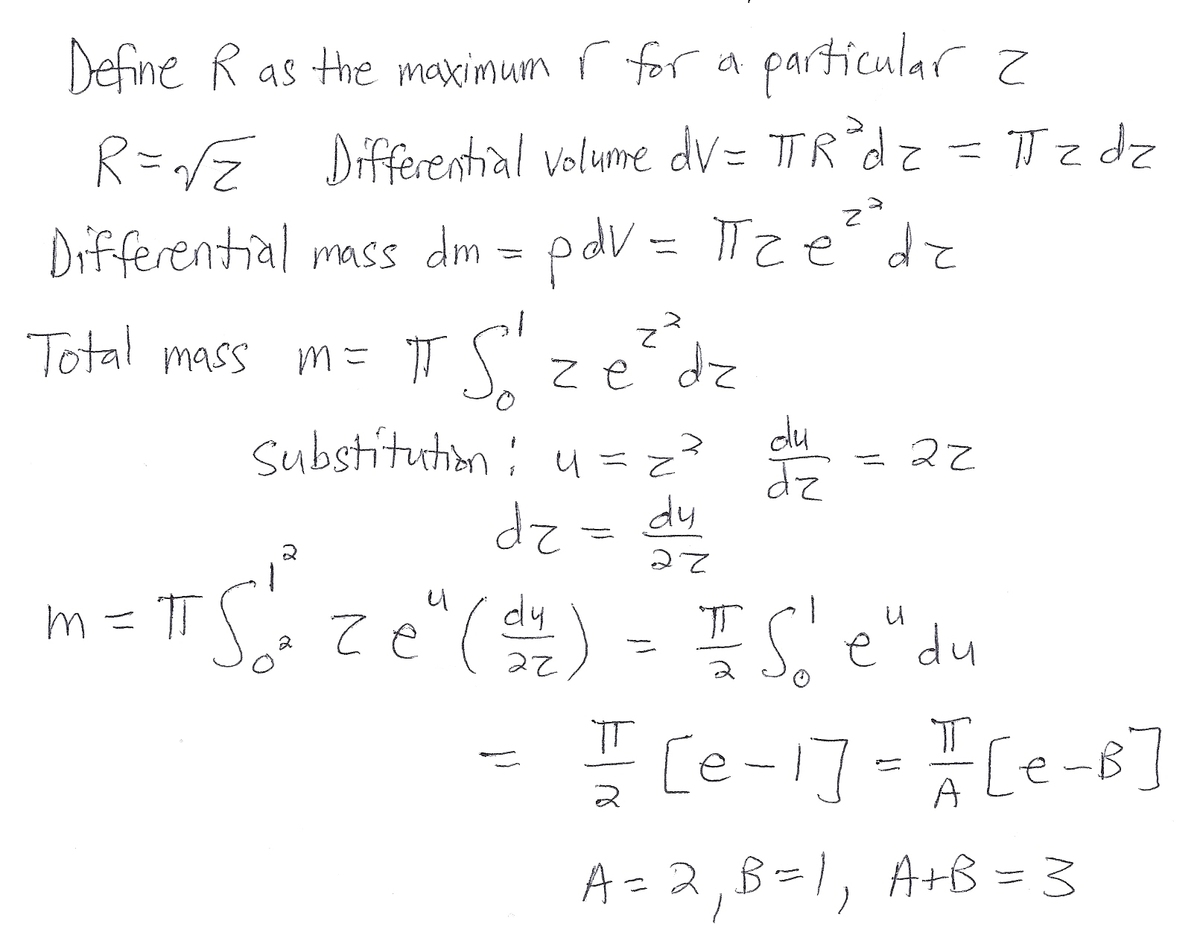Find the Mass
A solid object exists within the standard coordinate system. Its geometry is parametrized as shown above.
The object has a mass density , where is Euler's number . The objects mass can be expressed as:
where and are integers , determine .
The answer is 3.
This section requires Javascript.
You are seeing this because something didn't load right. We suggest you, (a) try
refreshing the page, (b) enabling javascript if it is disabled on your browser and,
finally, (c)
loading the
non-javascript version of this page
. We're sorry about the hassle.

Using cylindrical coordinates, with the substitutions provided,
x = r cos θ y = r sin θ z = z
we set up a triple integral with the mass function as the integrand. The Jacobian for this variable change is just r .
mass = ∫ 0 1 ∫ 0 z ∫ 0 2 π e z 2 r d θ d r d z = 2 π ( e − 1 )